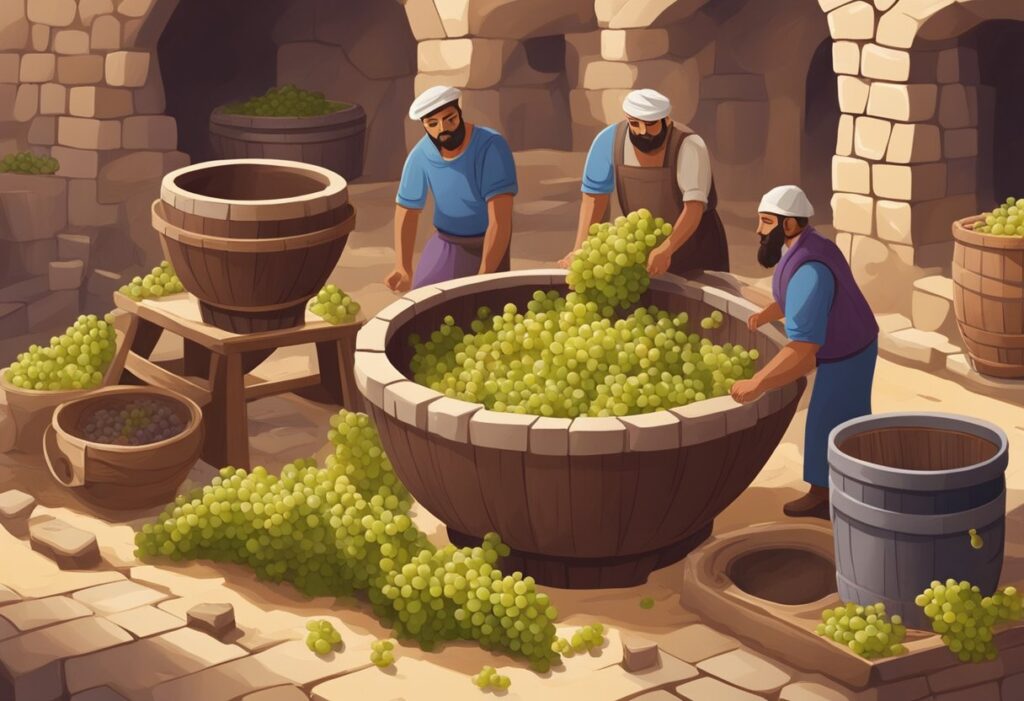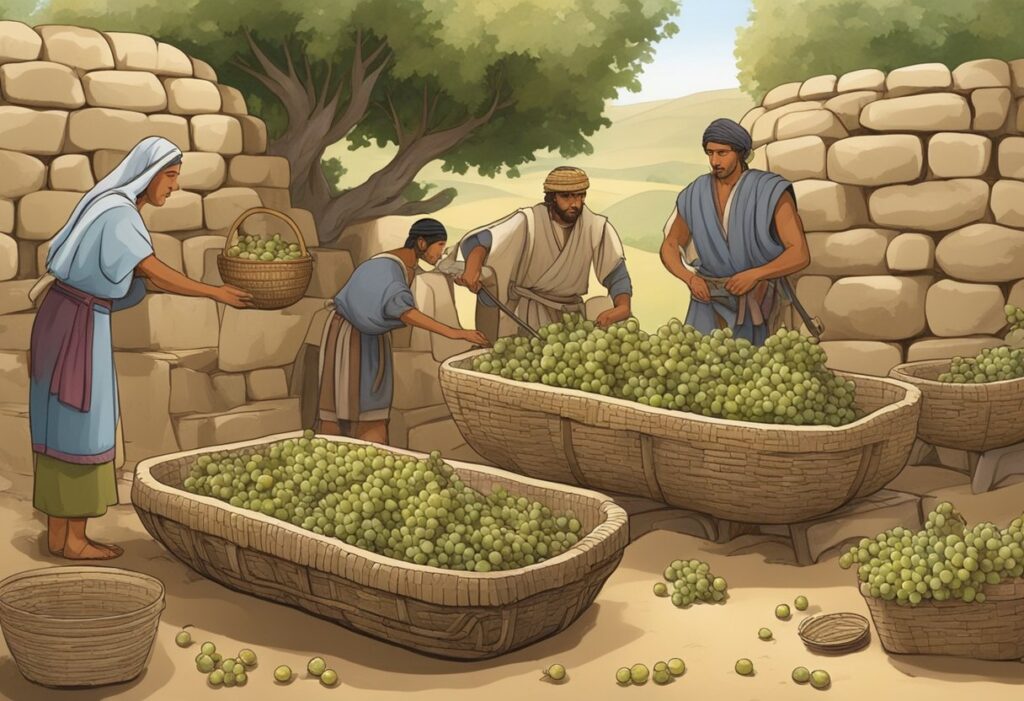Imagine walking through the serene courtyards of medieval monasteries, where monks meticulously tended to vineyards, laying the groundwork for modern French wine. French monastic orders were instrumental in the preservation and advancement of viticulture during the Middle Ages. These monks controlled fertile lands in regions like Burgundy and Champagne, cultivating grapes with remarkable care.
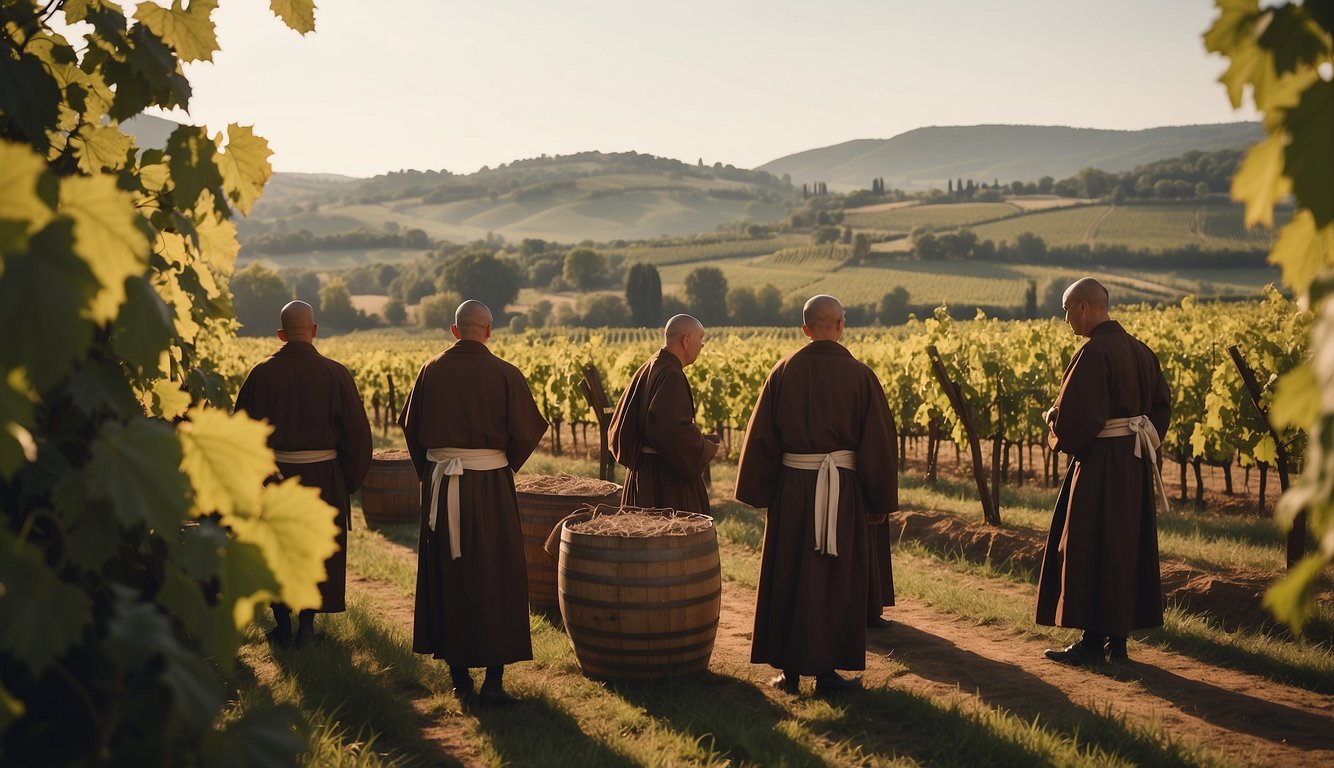
The monks didn’t just grow grapes; they perfected the winemaking process. Their techniques in soil management, vine training, and fermentation have had a lasting influence. Even today, the quality and practices of French winemaking owe much to those early monastic efforts. Monastic orders shaped French winemaking by introducing sophisticated viticulture techniques and maintaining high standards of grape cultivation and wine production.
Understanding the historical impact of these monastic orders helps you appreciate every sip of French wine. Their dedication to excellence established practices that continue to define the industry. By diving into the history, you can see how the monks’ work centuries ago still resonates in today’s vineyards. Explore how their legacy lives on in each bottle that comes from the storied regions of France.
The Birth of French Winemaking and Monastic Influence
French winemaking has deep roots in ancient traditions, which were significantly shaped by the Roman Empire. Later, monastic orders played a pivotal role in preserving and enhancing these practices, leading to the esteemed wine culture France enjoys today.
Ancient Roots of Viticulture in France
French viticulture dates back over 2600 years to the founding of Massalia by the Phocaeans in the 6th century BC. Even before Roman rule, the Celts were cultivating grapevines, particularly the Vitis vinifera species, in Gaul.
When the Romans arrived, they spread winemaking across the land, encouraging the planting of vines in what would become France’s renowned wine regions.
Particularly notable are the areas of Champagne and Burgundy, where fertile land made for excellent grape growing. The Romans’ advancements in viticulture set the foundation for future generations, integrating wine deeply into French culture and social life.
Monks and the Preservation of Winemaking
During the Middle Ages, monastic orders such as the Cistercians became key figures in the development of winemaking. Monks meticulously tended vineyards and improved winemaking techniques.
Monasteries, especially in Champagne and Burgundy, were vital in maintaining high standards for grape cultivation and wine production. The monks’ dedication to their craft resulted in the creation of distinctive wines like Vin Jaune.
Their influence extended beyond the vineyard, shaping the very quality, preservation, and tourism of the wine industry. Monastic contributions are still appreciated today as they laid the groundwork for numerous wine appellations and traditions.
Monasticism’s role in French winemaking underscores the enduring bond between religion and viticulture, ensuring that winemaking traditions were passed down through centuries.
Cultivation and Progression
Monastic orders were crucial in expanding vineyards across France and introducing advanced techniques in viticulture and enology.
Monastic Orders and Vineyard Expansion
Monks played a pivotal role in spreading vineyards across France. They were meticulous in selecting the best areas for vineyard cultivation due to their understanding of the region’s terroir. Monks particularly valued regions like Burgundy and Champagne for their unique soil and climate conditions.
They also followed rigorous practices for planting and maintaining vines. Monks used innovative pruning techniques to improve grape quality. Monasteries didn’t just grow grapes; they turned the process into a spiritual practice, ensuring every step, from planting to harvesting, maintained high standards.
Monasteries accumulated prime land, making them important centers for developing winemaking regions. This expansion laid the groundwork for many of France’s most famous wine regions, which still thrive today.
Innovation in Viticulture and Enology
Monks were also responsible for several innovations in viticulture and enology. They developed advanced fermentation methods to enhance the flavor and quality of their wines. These methods are still in use today, benefiting modern winemakers.
Monks experimented with techniques that improved winemaking efficiency and quality. For example, they perfected methods of irrigation that ensured consistent water supply to their vineyards, crucial for maintaining grape quality. They also paid close attention to the fermentation process, carefully monitoring and adjusting it to produce superior wines.
Their commitment to quality extended to every aspect of winemaking, from the choice of grape varieties to the fermentation process. Monastic influence laid the foundation for the high standards that define French winemaking. Monasteries’ innovations are a testament to their relentless pursuit of excellence in viticulture and enology.
Varietals and Regions: The Monastic Legacy
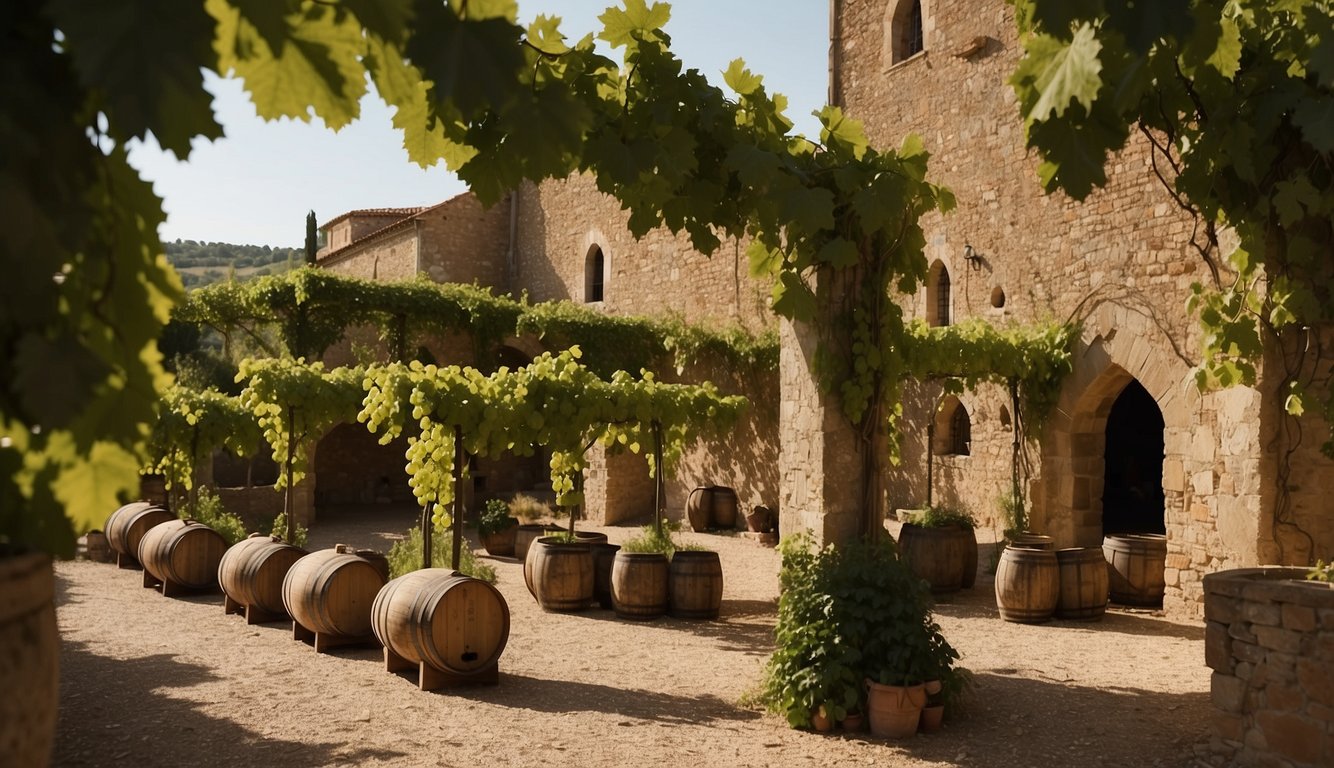
Monastic orders played a vital role in shaping French winemaking, particularly influencing grape varieties and wine regions. Their meticulous cultivation and innovative techniques left a lasting impact.
The Cistercian Order and Burgundy
The Cistercian monks were pioneers in Burgundy, one of the most famous wine regions in France. They settled in the area during the 12th century and brought meticulous agricultural practices that continue to define the region today. These monks established vineyards that carefully matched grape varieties to the unique terroir of Burgundy.
They cultivated grape varieties like Pinot Noir and Chardonnay, which are now synonymous with Burgundy wine. Pinot Noir produces some of the world’s most celebrated red wines, while Chardonnay is essential for both still wines and sparkling wines in the Champagne region.
The Cistercians’ attention to soil composition and climate helped establish distinct appellations in Burgundy. Each terroir within these appellations produces wines with unique characteristics, making Burgundy a key player in the French wine trade. Their legacy continues to influence practices in other renowned regions such as the Loire, Bordeaux, and Alsace.
Their contributions are a testament to the enduring influence of monastic orders on French winemaking.
Impact of Historical Events on Monastic Winemaking
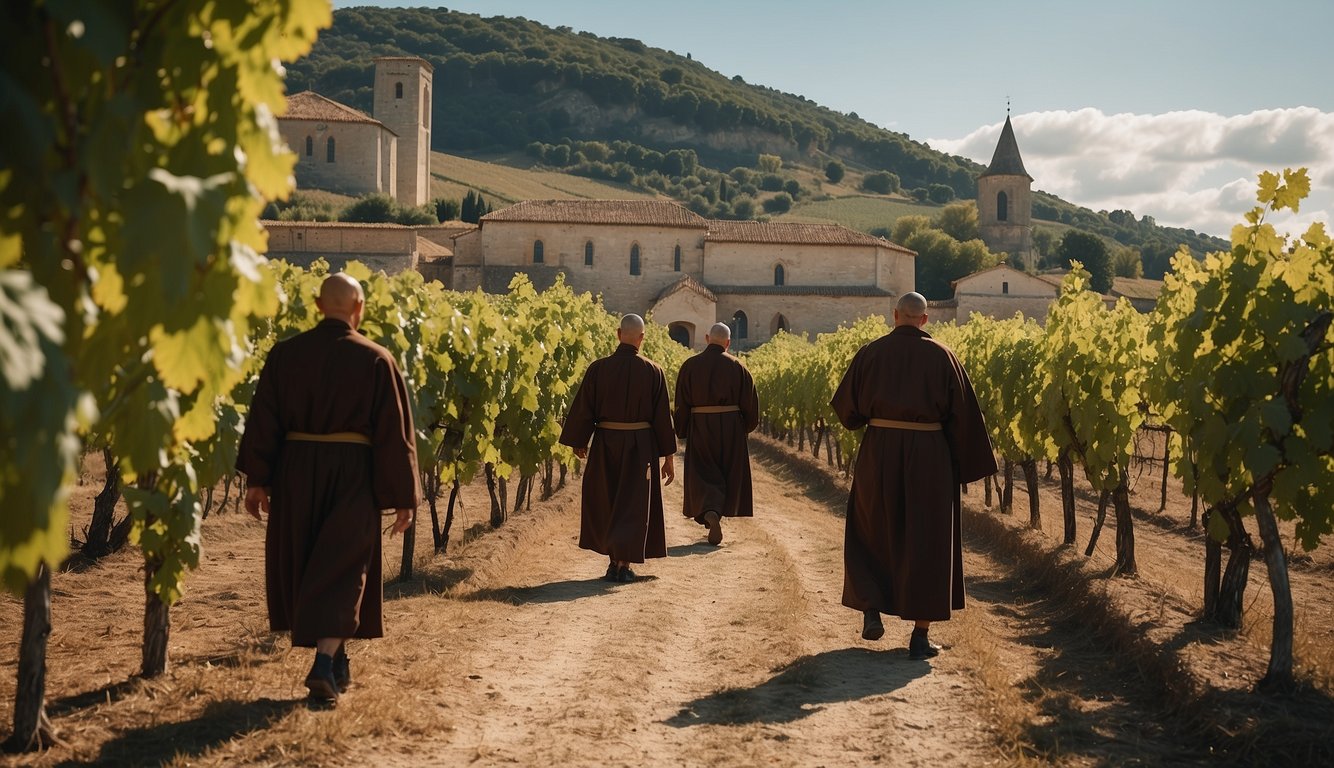
Historical events significantly influenced monastic winemaking, reshaping its landscape and spreading its practices globally. Events like the French Revolution and colonial expansions played key roles in this transformation.
The French Revolution and the Transformation of Monastic Holdings
During the French Revolution, many monastic orders lost their lands and vineyards due to the changing political climate. The nationalization and sale of monastic properties led to a drastic shift in land ownership.
Monastic communities that had been custodians of advanced winemaking knowledge saw their vineyards confiscated and auctioned off to private individuals. Before these changes, monastic orders such as the Benedictines and Cistercians were instrumental in perfecting vineyard care, grape harvesting, and fermentation techniques.
The displacement of these monastic orders significantly altered the structure of French viticulture. Many of these lands were acquired by the emerging bourgeoisie and nobility, who continued to leverage the established practices. This eventually led to the modernization of French winemaking and the integration of these techniques into broader European traditions.
Global Influence and the Spread to New Territories
As European explorers expanded their reach during the Age of Discovery, they took viticultural techniques with them to new territories such as California, Italy, Spain, and beyond. Monastic knowledge included advanced methods of vineyard management, pruning, and fermentation.
Religious missions played a significant role in transplanting these practices outside Europe. For example, Spanish missionaries brought grapevine cuttings and monastic winemaking techniques to the Americas, particularly in California.
Monastic orders initially cultivated these vineyards to produce sacramental wine. Over time, their influence contributed to the development of local winemaking industries. These methods set the foundation for modern winemaking practices in many new regions, ensuring a lasting legacy that persists today.
By understanding these historical contexts, you can appreciate the depth and breadth of monastic contributions to wine culture globally.
Reflections on Monastic Contribution to the Wine Industry
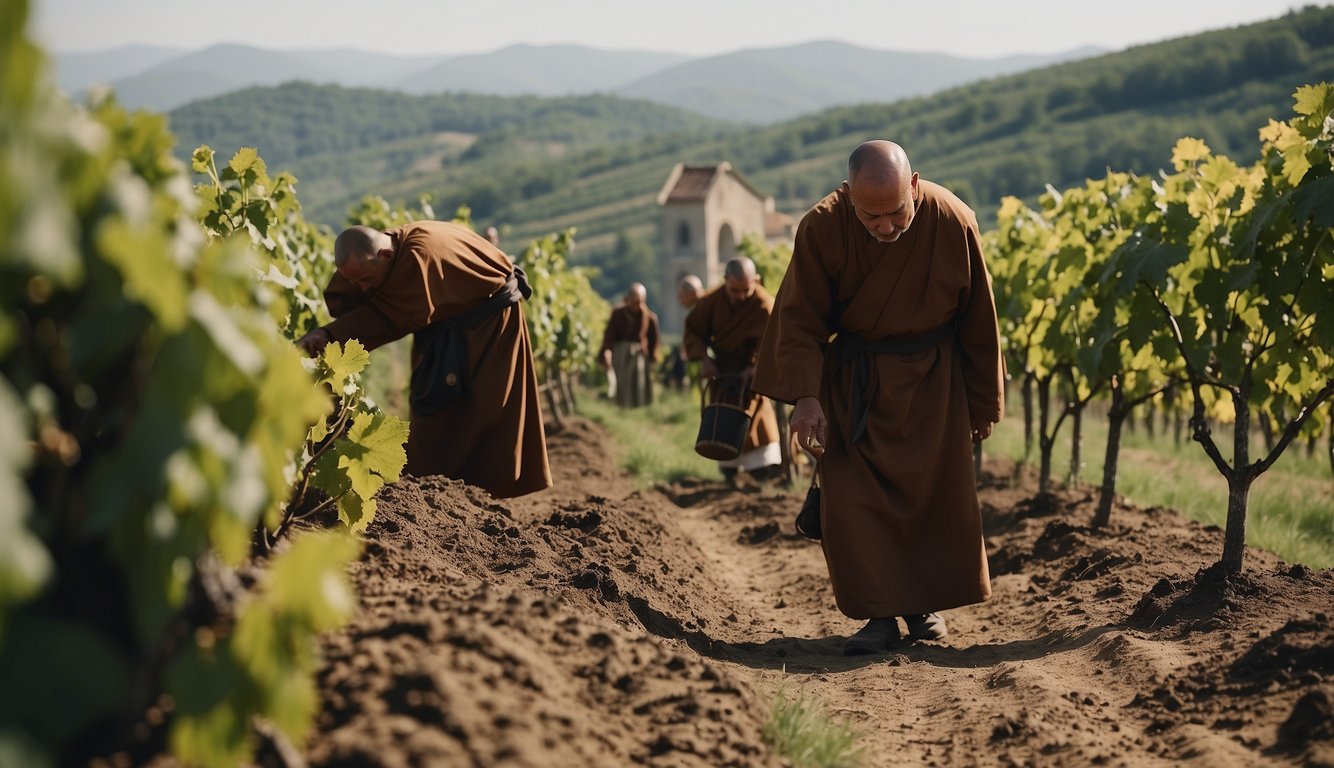
Monastic orders have deeply shaped the landscape of winemaking in France. The Benedictines, following the Rule of St. Benedict, dedicated themselves to both prayer and labor.
You might be familiar with Dom Pérignon, a name synonymous with sparkling wine. He was a Benedictine monk who made important contributions to the production of champagne. His efforts improved the quality and consistency of the wine.
Monasteries played a significant role in preserving and propagating winemaking techniques. They introduced new traditions and methods that are still visible today. The daily rhythm in monastic life often included tasks related to the vineyard, reflecting a balance between spiritual practice and work.
The Catholic Church used wine in the Eucharist, ensuring a steady demand for quality wine. This religious aspect spurred monks to perfect their craft, leading to higher standards and innovations in viticulture.
Monasticism emphasized community living and self-sufficiency. This led to a meticulous approach to vineyard management. Monks documented their techniques, leaving behind a rich legacy of knowledge that continued to influence French viticulture.
By maintaining high standards and meticulous care, monastic orders, particularly the Benedictines, created a thriving wine culture. Their contributions not only enhanced the quality of wine but also laid the foundations for future generations of winemakers.
The blend of spirituality and agriculture in monastic life continues to resonate, reflecting the deep impact of monastic traditions on the modern wine industry.
